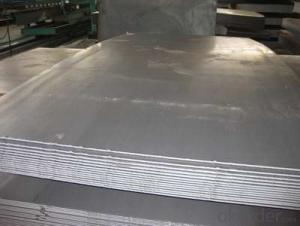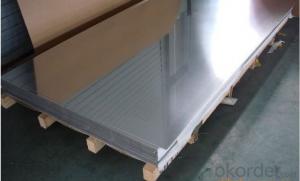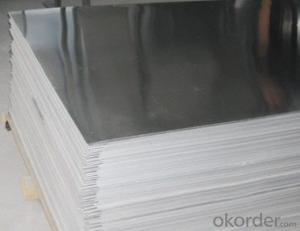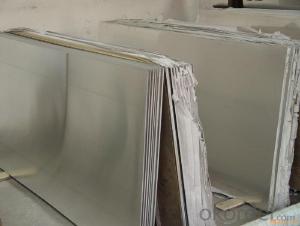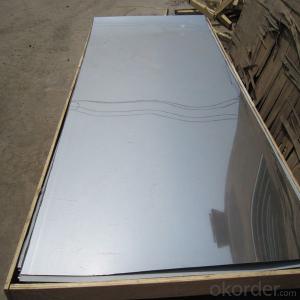Stainless Steel 304 Mettal Sheet with No.4 Surface Treatment
- Loading Port:
- Shanghai
- Payment Terms:
- TT OR LC
- Min Order Qty:
- 500 m.t.
- Supply Capability:
- 5000000 m.t./month
OKorder Service Pledge
OKorder Financial Service
You Might Also Like
Hot sale stainless steel sheet 201/202/304/304l/310S/309S/316L/316Ti/316/321/410/420/430/444/443/409L,and 904L.
Description of Stainless Steel Sheet:
Description | steel sheet,hot rolled steel sheet,cold rolled steel sheet, steel sheet,sheet,steel plate |
Standard | ASME, ASTM, EN ,BS,GB,DIN, JIS etc |
Application | Steel sheet applies to construction field, ships building industry, petroleum & chemical industries, war and electricity industries, food processing and medical industry, boiler heat exchanger, machinery and hardware fields. |
Packaging | Standard export sea-worthy packing |
Delivery time | 10-30 days |
Quality | No.1 |
Productivity | 500 tons/Day |
Note | Our company has cooperative relation between the domestic agents. Stainless steel sheet can be made accordingto the customers requirements. Fasten delivery. Quality assured. |
Contacts | If you have any question,please feel free contact me. |
Stainless steel sheet surface finish characteristics
Surface finish | Characteristics and application |
2B | The surface brightness and flatness of no2B is better than no2D. then through a special surface treatment to improve its mechanical properties,No2B could nearly satisfy comprehensive uses. |
No.1 | Polished with abrasive belt of grit#100-#200, have better brightness with discontinuous coarse stria, used as inner and external ornaments for building, electrical appliances and kitchen utensils etc. |
No.4 | Polished with abrasive belt of grit #150-#180,have better brightness with discontinuous coarse stria, but thinner than No3, are used as bathtub buildings inner and external ornaments electrical appliances kitchen utensils and food processing equipment etc. |
HL | Polished with abrasive belt of grit #150-#320 on the NO.4 finish and has continuous streaks, mainly used as buildings ornaments elevators, door of building, frontal plate etc. |
BA | Cold rolled, bright annealed and skin-passed, the product have excellent brightness and good reflexivity like mirror, kitchen apparatus, ornament etc. |
8K | The product have excellent brightness and prefer reflexivity can to be the mirror. |
Main Features of stainless steel sheet :
•Escalator, Elevator, Doors
•Furniture
•Production tools, Kitchen appliances, freezers, cold rooms
•Auto Parts
•Machinery and Packaging
•Equipment and Medical devices
•Transport system
Product Details:
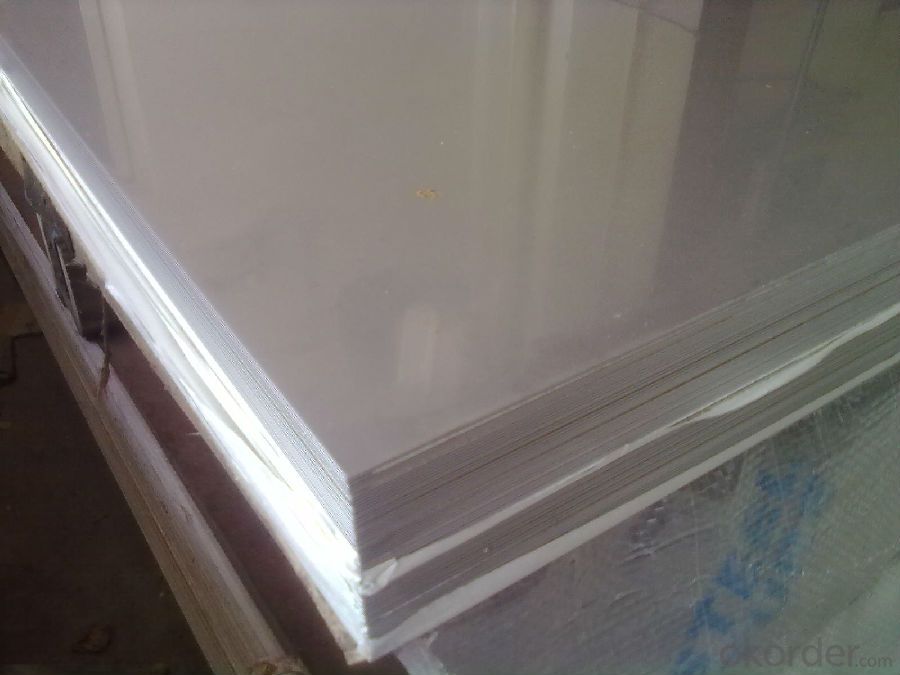

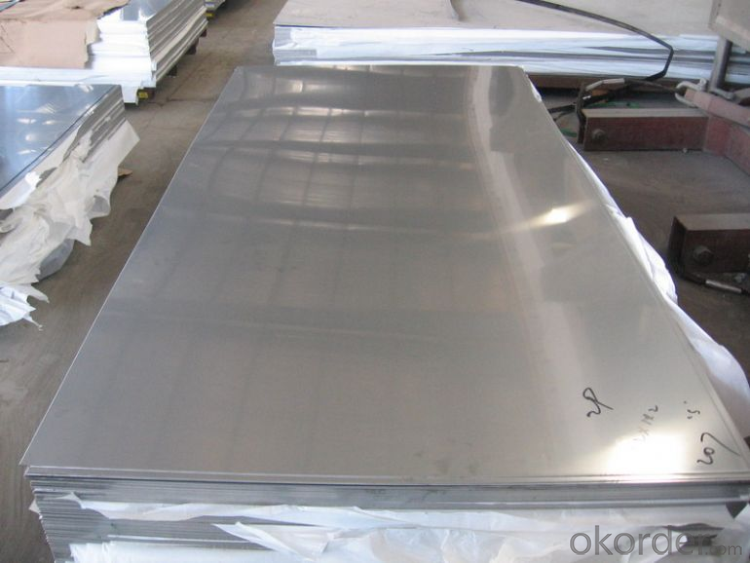



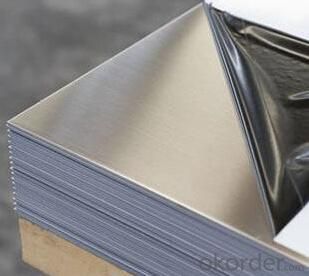
Cold Rolled and Hot Rolled:

Packing and Loading:
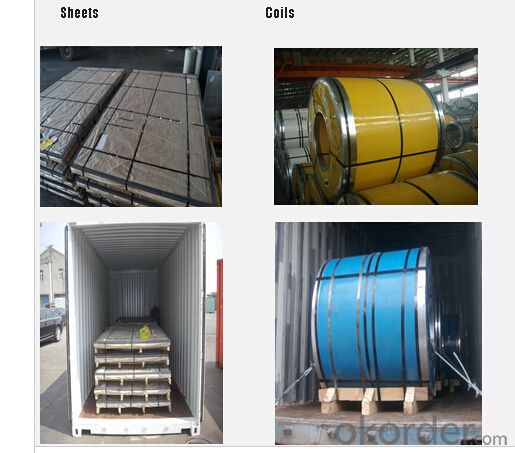
FAQ:
1. What's the quality?
Very fine, we have been exported to more than 30 countries.
2. How long get reply?
Usually within 24 hours
If you have any question about stainless steel sheets, do not forget to send the email to us! You will get the competitive Price and have a very good experience about the Buying Process! CNBM International Corporation is always your trustful friend!
- Q:What are the different types of stainless steel sheet edges available?
- Different options are available for stainless steel sheet edges, each with its own unique advantages and characteristics. 1. The mill edge is the standard finish produced during manufacturing. It features a straight, sharp edge without any additional treatment. Mill edge stainless steel sheets are commonly used in industrial applications where aesthetics are not a priority. 2. Slit edge sheets are created by cutting the sheet along its length, resulting in a slightly rounded edge. This type of edge is often used in applications where safety is a concern, as it reduces the risk of sharp edges causing injury. 3. Sheared edge sheets are created by cutting the sheet along its width using shearing blades. This process produces a clean, straight edge without any additional finishing. Sheared edge sheets are often used in applications that require precise dimensions. 4. Deburred edge sheets have undergone a process to remove any sharp or rough edges, resulting in a smooth and safe edge finish. Deburring is typically done using abrasive materials or specialized machinery. These sheets are commonly used in applications that prioritize safety and aesthetic appearance. 5. Rolled edge sheets have a curved or rounded edge, created by rolling the sheet during manufacturing. This edge type is commonly used in applications where a smoother and more finished appearance is desired. Rolled edge sheets are also easier to handle and less likely to cause injury during installation. Ultimately, the choice of stainless steel sheet edge depends on the specific requirements of the application, considering factors such as safety concerns, aesthetic preferences, and dimensional accuracy.
- Q:What does "80 wire" stainless steel plate mean? How much more expensive than the average stainless steel plate?
- Stainless steel terminology, the general thickness of C to calculate the negative difference, the 1 C is 0.01MM, so 80C is 0.8MM. 0.8MM thick stainless steel with different thickness, different prices, generally about Yuegui thin.
- Q:Can stainless steel sheets be used for lighting fixtures?
- Yes, stainless steel sheets can be used for lighting fixtures. Stainless steel is a durable and corrosion-resistant material that is commonly used in various applications, including lighting fixtures. Its sleek and modern appearance also makes it a popular choice for many contemporary lighting designs.
- Q:How to calculate the weight of stainless steel plate?
- Stainless steel not only refers to a stainless steel, but more than one hundred kinds of industrial stainless steel, the development of each kind of stainless steel in its specific application areas have good performance. The key to success is to find out what the purpose is, and then determine the correct type of steel.
- Q:How do you prevent stress corrosion cracking in stainless steel sheets?
- Several measures can be implemented to prevent stress corrosion cracking in stainless steel sheets. Firstly, it is crucial to select the appropriate grade of stainless steel that is resistant to stress corrosion cracking. While commonly used grades like 304 and 316 have good resistance, more aggressive environments may require specialized alloys such as duplex stainless steels or high nickel alloys. In addition, controlling the environment surrounding the stainless steel sheets is important. This involves avoiding exposure to corrosive agents like chlorides, sulfides, and acids. Proper pH levels and temperature should also be maintained to minimize the risk of stress corrosion cracking. Proper fabrication and handling techniques should be followed to prevent the introduction of stress that can lead to cracking. Unnecessary bending, cold working, or overloading should be avoided. Proper storage and handling techniques should also be employed to prevent surface contamination or damage that may facilitate stress corrosion cracking. Applying protective coatings or passivation treatments can enhance the corrosion resistance of stainless steel sheets. These treatments create a passive oxide layer on the surface that acts as a barrier against corrosive agents, reducing the risk of stress corrosion cracking. Stress relief heat treatment can be performed on stainless steel sheets to remove residual stresses induced during fabrication. This involves heating the sheets to a specific temperature and holding it for a certain period, followed by slow cooling. Stress relief heat treatment helps to minimize the risk of stress corrosion cracking by reducing internal stress levels. Regular inspection and maintenance are essential to identify any signs of stress corrosion cracking at an early stage. This allows for timely repairs or replacements to prevent further damage. Proper maintenance practices such as cleaning, removing deposits, and ensuring proper drainage can also contribute to the prevention of stress corrosion cracking. By following these preventive measures, the risk of stress corrosion cracking in stainless steel sheets can be significantly reduced, ensuring the durability and integrity of the material in various applications.
- Q:What are the different types of stainless steel sheet alloys?
- There are several different types of stainless steel sheet alloys, each with their own unique properties and characteristics. Some of the most common types include: 1. Austenitic stainless steel: This is the most widely used type of stainless steel sheet alloy. It is known for its high corrosion resistance and excellent formability. Austenitic stainless steel grades include 304 and 316, which are commonly used in various industries such as food processing, pharmaceuticals, and architecture. 2. Ferritic stainless steel: This type of stainless steel sheet alloy has a higher carbon content and lower chromium content compared to austenitic stainless steel. Ferritic stainless steel is known for its good corrosion resistance and high strength. It is often used in applications where high temperature resistance is required, such as automotive exhaust systems. 3. Martensitic stainless steel: Martensitic stainless steel sheet alloys have a higher carbon content and lower chromium content compared to both austenitic and ferritic stainless steels. They are known for their high strength and hardness, as well as their good corrosion resistance. Martensitic stainless steel grades are commonly used in applications such as cutlery, surgical instruments, and turbine blades. 4. Duplex stainless steel: This type of stainless steel sheet alloy is a combination of austenitic and ferritic stainless steels. It offers a good balance of strength and corrosion resistance, making it suitable for a wide range of applications. Duplex stainless steel grades are commonly used in the chemical processing, oil and gas, and marine industries. 5. Precipitation-hardening stainless steel: This type of stainless steel sheet alloy is heat treatable and can achieve high strength and hardness through a precipitation-hardening process. Precipitation-hardening stainless steel is commonly used in aerospace and defense applications, where high strength and corrosion resistance are critical. These are just a few examples of the different types of stainless steel sheet alloys available. The choice of alloy depends on the specific application requirements, such as corrosion resistance, strength, and temperature resistance.
- Q:Are stainless steel sheets suitable for railway station platforms?
- Yes, stainless steel sheets are suitable for railway station platforms. Stainless steel is a highly durable material that can withstand heavy foot traffic and extreme weather conditions, making it an ideal choice for platforms in railway stations. It is resistant to corrosion, which is crucial in areas exposed to moisture, such as platforms where rain, snow, or spilled liquids may occur. Stainless steel sheets are also easy to clean and maintain, ensuring a hygienic and safe environment for passengers. Additionally, stainless steel has a sleek and modern appearance, adding to the aesthetic appeal of the railway station. Overall, stainless steel sheets provide the necessary strength, durability, and aesthetic qualities required for railway station platforms.
- Q:What are the common uses of stainless steel sheets in the automotive industry?
- Stainless steel sheets are commonly used in the automotive industry for various purposes such as manufacturing body panels, exhaust systems, fuel tanks, and decorative trim. The corrosion-resistant properties of stainless steel make it an ideal material for these applications, providing durability and aesthetic appeal to vehicles.
- Q:Are stainless steel sheets good for cryogenic storage?
- Yes, stainless steel sheets are commonly used for cryogenic storage due to their excellent properties. Stainless steel is known for its high strength, durability, and resistance to corrosion, making it suitable for extreme temperature environments like cryogenic storage. Additionally, stainless steel can maintain its mechanical properties even at very low temperatures, ensuring the safety and integrity of the stored materials. Moreover, stainless steel sheets offer good thermal conductivity, allowing for efficient heat transfer during cryogenic processes. Therefore, stainless steel sheets are a reliable choice for cryogenic storage applications.
- Q:Can stainless steel sheets be used for heat shields?
- Yes, stainless steel sheets can be used for heat shields. Stainless steel is known for its high heat resistance and durability, making it an excellent choice for protecting against heat transfer. Stainless steel sheets can effectively shield against radiant heat, convective heat, and conductive heat, making them suitable for a variety of applications such as automotive heat shields, industrial equipment, and home appliances. Additionally, stainless steel sheets offer corrosion resistance and are easy to clean, making them a practical and long-lasting choice for heat shield applications.
1. Manufacturer Overview |
|
|---|---|
| Location | |
| Year Established | |
| Annual Output Value | |
| Main Markets | |
| Company Certifications | |
2. Manufacturer Certificates |
|
|---|---|
| a) Certification Name | |
| Range | |
| Reference | |
| Validity Period | |
3. Manufacturer Capability |
|
|---|---|
| a)Trade Capacity | |
| Nearest Port | |
| Export Percentage | |
| No.of Employees in Trade Department | |
| Language Spoken: | |
| b)Factory Information | |
| Factory Size: | |
| No. of Production Lines | |
| Contract Manufacturing | |
| Product Price Range | |
Send your message to us
Stainless Steel 304 Mettal Sheet with No.4 Surface Treatment
- Loading Port:
- Shanghai
- Payment Terms:
- TT OR LC
- Min Order Qty:
- 500 m.t.
- Supply Capability:
- 5000000 m.t./month
OKorder Service Pledge
OKorder Financial Service
Similar products
New products
Hot products
Related keywords
